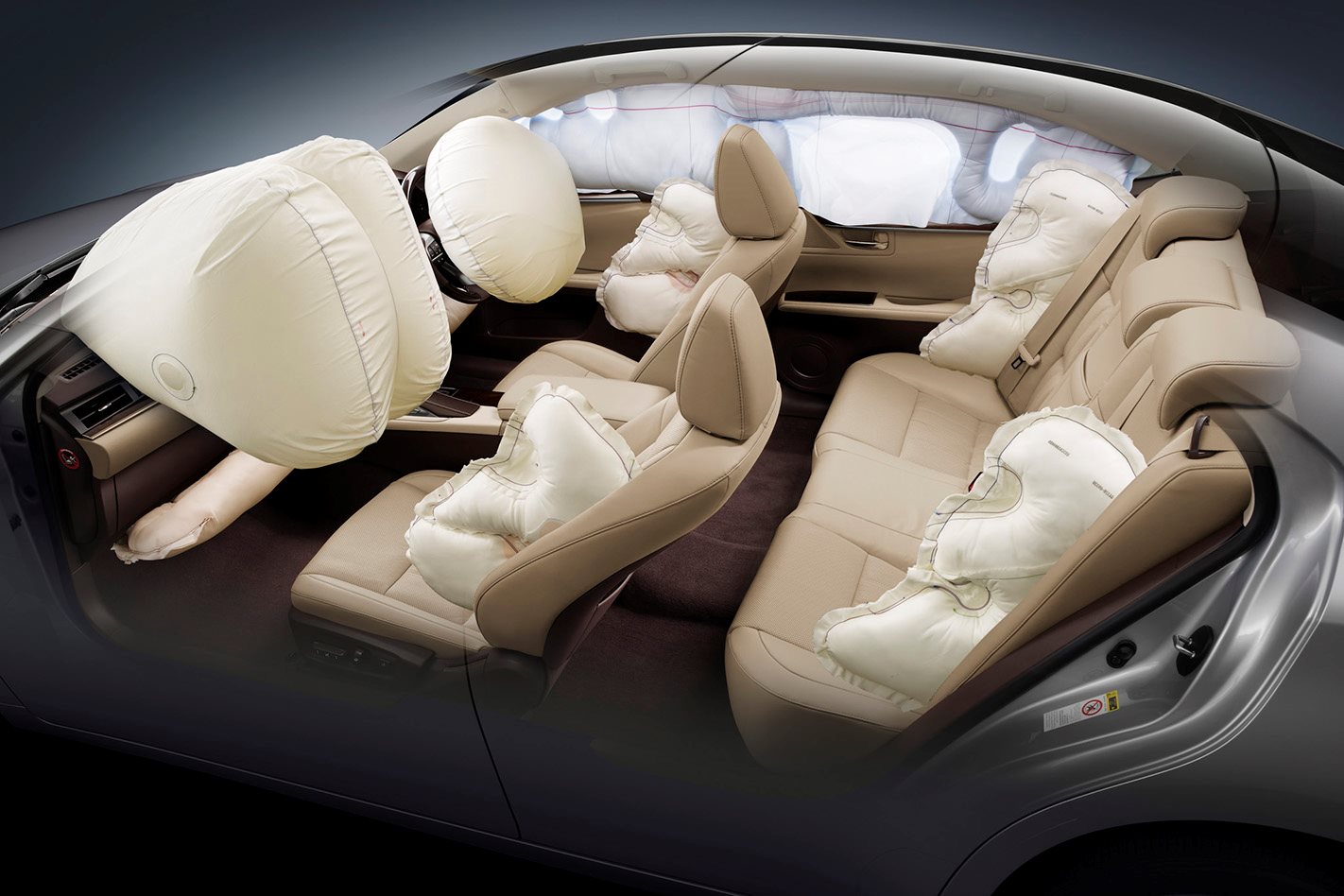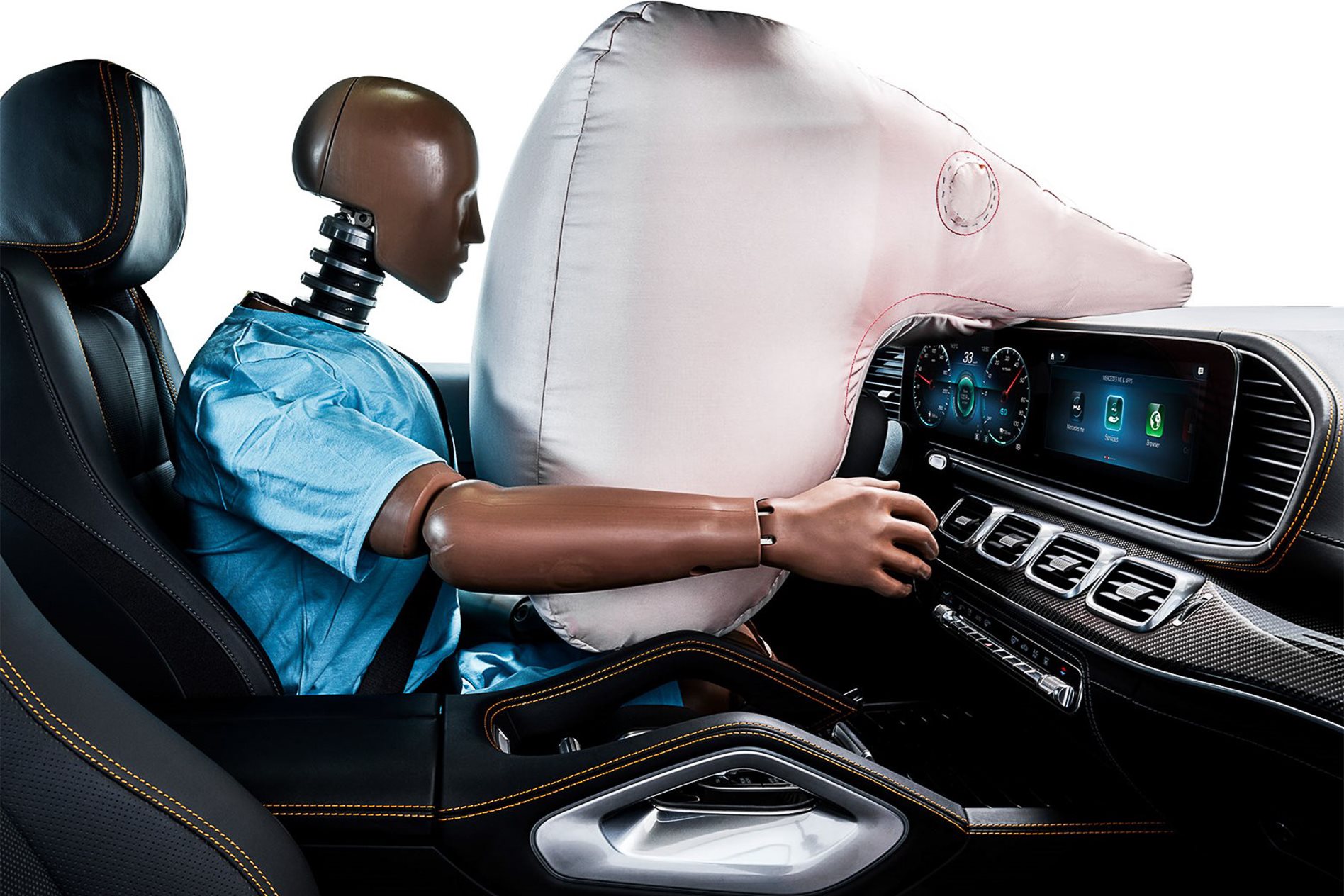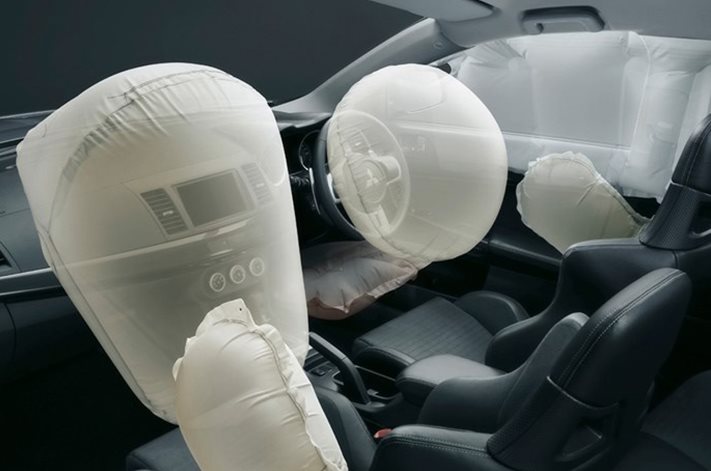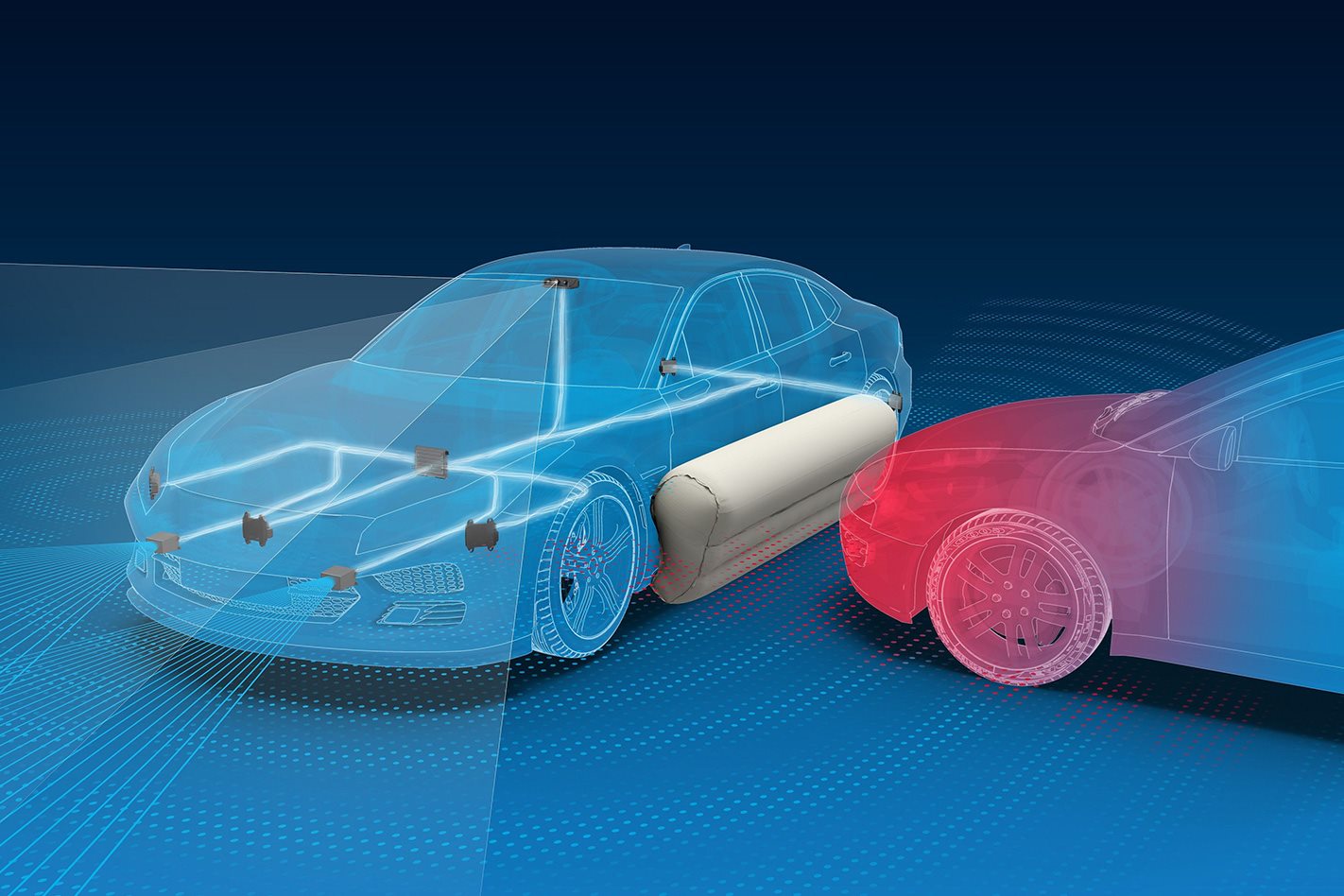
How do airbags work? Here’s what you should know about the critical safety feature when buying a new car
Since the early 1990s, airbags have become standard equipment in most new cars sold in Australia – initially for drivers, then front passengers, to today, when most passenger cars are equipped with upwards of six airbags.
Airbags are an important safety feature that can help reduce the risk of injury in a car crash by deploying and inflating to provide a cushion for the driver and passengers.
Airbag units are equipped with ‘satellite sensors’ that activate the inflator in a severe frontal collision at speeds in excess of 24km/h. The inflator ignites a chemical mix of sodium azide (NaN3) and potassium nitrate (KNO3) to create a pulse of nitrogen gas that rapidly inflates a thin nylon bag.
As the bag inflates it pushes its way out from between a split in the cover so none of the steering wheel, dashboard or other surface in front hits your face or body. As your head or body meets the airbag, it cushions the impact by deflating through holes at the base.
The driver-side airbag ignites and inflates in 20-30 milliseconds, or less than half the time it takes to blink your eyes. The passenger bag takes 30-40 milliseconds.
Airbags are designed to deploy at a collision speed above 25km/h and when the angle of impact is about 30 degrees on either side of the car’s direction – this means frontal airbags won’t deploy in the event of a side impact or rollover.
How airbags work: Step by step
- When a car hits something, the acceleration or force is detected by an accelerometer.
- If the deceleration is strong enough, the accelerometer activates the airbag circuit.
- The airbag circuit sends an electric current through a heating element, causing a chemical explosive to ignite.
- The chemical reaction generates a large amount of harmless gas, which is sent into a nylon bag behind the steering wheel.
- The bag inflates and pushes against the plastic cover on the steering wheel, pushing it off and expanding in front of the driver.
- The driver pushes against the bag, causing it to deflate as the gas escapes through small holes around the edges.
- The bag should fully deflate by the time the car comes to a stop.

Where are airbags fitted?
Airbags were first fitted within steering wheel hubs to protect the driver during a front-on collision, but now they can be mounted throughout the car to protect front and rear occupants in a variety of situations, including side impact and rollover events.
Some cars have up to nine airbags, though there’s no actual minimum requirement as they are officially classified as supplementary safety equipment and aren’t mandatory, like seatbelts.
| Frontal airbags: Originally fitted at the front of the car to protect the driver from a forward collision and were mounted in the steering wheel. Front passenger airbags were later introduced and fitted into the dashboard |
| Knee airbags: Deploys in frontal collisions to protect the front occupantsu2019 knees from hitting the steering column and dash |
| Side airbags: Deploys on impact in side collisions and possibly during rollovers |
| Footbags: Deploys into the foot well to reduce injuries to the feet and lower legs |
| Curtain airbags: Inflates downwards from the roof sill to protect the occupantu2019s head and remains inflated |
| Side torso airbags: Deploys from the side of the seat upwards and remains inflated |
| Seatbelt airbags: Deploys from the seatbelt across the torso and shoulder. |
How many airbags is enough?
The Australasian New Car Assessment Program (ANCAP) recommends airbags that protect the head, neck, face, and thorax in front and side crashes.
This means frontal, side, and curtain airbags should be on your list.

Airbag issues
While airbags can be a lifesaver in an accident, it’s important to be aware of certain safety considerations when using them. Here are a few things to keep in mind when it comes to safely using airbags in cars.
- Airbags are designed to mitigate injury in a crash, not prevent it. Minor injuries such as bruises and scratches after contact with the bag are common, but that’s a small price to pay to prevent the full force of a significant impact
- Wearing glasses doesn’t present any danger of facial injuries if the occupant is at the normal distance from the steering wheel or dashboard
- Airbags are designed for people sitting and driving in a proper position – so don’t sit with your feet on the dashboard, and when driving, avoid placing your hands on the steering wheel’s hub as you could end up punching yourself pretty hard should the airbag deploy.
- Airbags are designed for adult-sized people. Children are at risk of serious injury from a deploying frontal airbag, so avoid having kids in the front seat even if they are in a child seat. Check the front airbag is OFF if you have a child under 13, or a person less than 153cm tall, in the front passenger seat
- Don’t place objects or accessories in the car that may prevent the deployment of the airbag or become projectiles when the airbag goes off, such as phone holders, covers, pictures, clocks, magnets, and mats. Seat covers can obstruct the deployment of seat-mounted side airbags as well
- If you get an airbag warning light in your dashboard, take the car to your dealer or mechanic as it could mean the airbag is faulty. Don’t attempt to fix it yourself
- Bull bars or roo bars can affect airbag operation, and can only be fitted if it is certified by the vehicle’s manufacturer as being safe for that vehicle. Aftermarket bars can only be fitted if a manufacturer can prove they won’t detrimentally affect the performance of the airbag system.
- If you have an SUV with curtain airbags, check that it also has a rollover sensor
- Read your manual and understand what your airbags can and can’t do, and where they are located
- Find out if your vehicle is subject to the massive Takata airbag recall that affects more than a million vehicles worldwide.
What was the Takata airbag scandal?
The Takata airbag scandal was a major recall that affected millions of vehicles worldwide, including – according to the ACCC – around 2 million in Australia.
The issue stemmed from the airbag inflators manufactured by Takata, a Japanese company that supplied airbags to a number of major automakers. It was discovered that these airbag inflators were prone to rupturing upon deployment, which could result in shrapnel being sprayed into the vehicle’s cabin. This defect was linked to at least 27 deaths and hundreds of injuries globally.
The recall affected vehicles from a wide range of manufacturers, including Honda, Toyota, BMW, and Ford, among others. The issue was traced back to a number of factors, including the use of ammonium nitrate as a propellant in the inflators, which was found to be unstable and prone to decomposition over time.
The recall was one of the largest and most complex in automotive history, with millions of vehicles being recalled and millions of inflators being replaced. The scandal resulted in Takata filing for bankruptcy in 2017.
Frequently Asked Questions
We recommend
-
 News
News"Risk your lives and your rego”: FCAI launches new Takata airbag campaign
Despite significant progress, the FCAI’s battle with the Takata recall continues with 195,000 cars still to be rectified
-
 News
NewsAirbags outside your car could improve crash safety
External airbags are being developed to reduce T-bone collision severity by up to 40 percent



